How to exercise lower chest? Most people honestly don’t think about it. You hit the gym, do some bench press, maybe a few dumbbell flyes, and move on. But lower chest? Barely touched.
The result? Big chest on top, flat underneath. Looks kind of off. You finish your workout, check the mirror, and yeah… something’s missing.
But here’s the thing, lower chest matters. Not just for looks, but for balance and strength too.
In this guide, I’ll show you how to train your lower chest the right way—what exercises work best, what mistakes to avoid, and how to put it all together into one simple plan.
Why Is Lower Chest Training Important?
In most routines, training your lower chest is often ignored.
Most people focus on bench press or incline press and forget the bottom part. But honestly, if you want a chest that looks strong and full from top to bottom, lower chest matters. A lot.
👉 Key Muscles of the Lower Chest
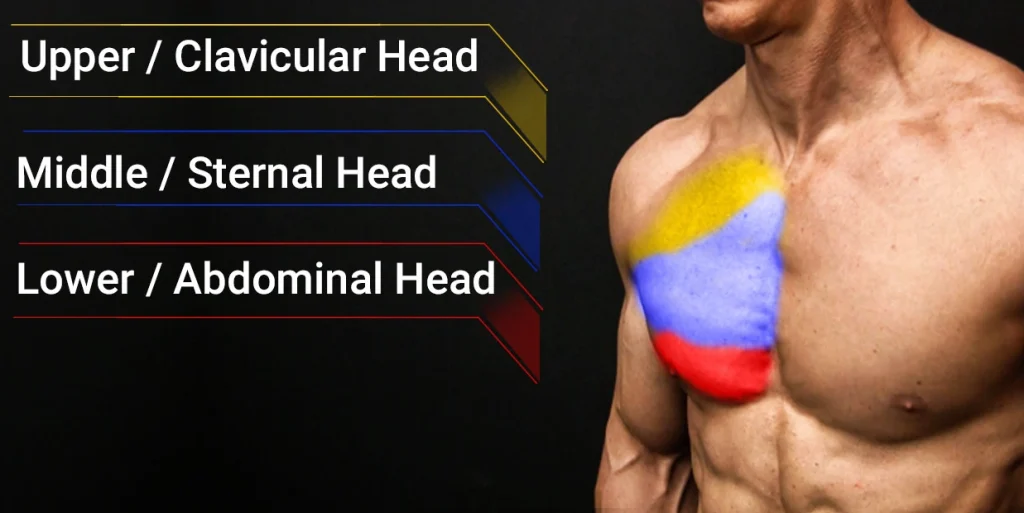
The lower chest is part of your pectoralis major, specifically the lower fibers. Here’s what to know:
- Where is it?
Starts from the bottom of your chest bone and stretches to your upper arm. - What does it do?
Helps you push downward—like in dips or decline bench press. - How to activate it?
Flat bench and incline moves don’t do much. You need exercises that push down and away.
If you’re not training with a downward angle, you’re barely hitting it.
👉 Why It Matters
Lower chest isn’t just about looks—it plays a real role in strength training and balance too.
- Better chest shape
- It defines the lower edge of your chest.
- Without it, your chest looks top-heavy or unfinished.
- It defines the lower edge of your chest.
- More pushing power
- Lower chest helps in dips, push-ups, and decline press.
- Weak here = weak in those moves.
- Lower chest helps in dips, push-ups, and decline press.
- Balanced development
- Only training upper chest? You’re building uneven muscle.
- Over time, that can mess with posture and stability.
- Only training upper chest? You’re building uneven muscle.
✅ Bottom line: If you want a complete, solid chest—train your lower chest. No skipping.
How to Exercise Lower Chest?
How to exercise lower chest? Simple—you need to change the angle. Regular bench press mostly hits the middle chest. To grow the lower chest, you need exercises that push downward or pull from low to high.
So, what actually works?
1. Decline Bench Press
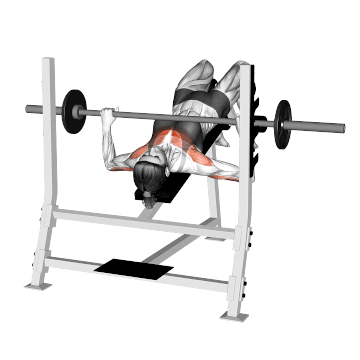
Lie on a decline bench. Lower the barbell to your lower chest, then press it up.
- Why it works: The angle hits the lower chest fibers directly.
- Tip: Elbows at 45°, lower slow, press with control.
2. Decline Dumbbell Flyes
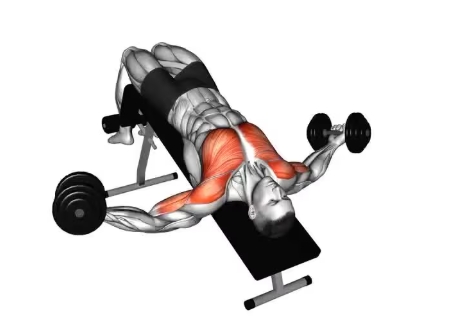
Same bench setup, but open your arms with dumbbells.
- Why it works: Deep stretch and squeeze target the lower chest.
- Tip: Keep a slight bend. Don’t let dumbbells touch.
3. Dips (Chest-Focused)
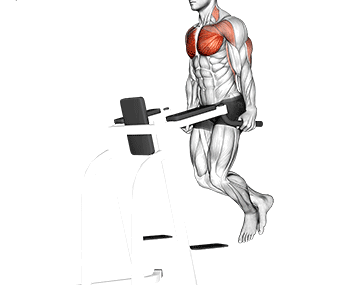
Lean forward as you dip. That small change makes a big difference.
- Why it works: The forward angle shifts work to your lower chest.
- Tip: Chin down, elbows slightly out, go deep and slow.
4. Decline Push-Ups
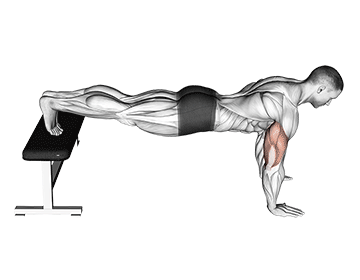
Feet elevated = angle changes. Great if you’re training at home.
- Why it works: Shifts tension downward.
- Tip: Keep your body tight. Slow reps. Squeeze at the top.
5. Low Cable Crossover
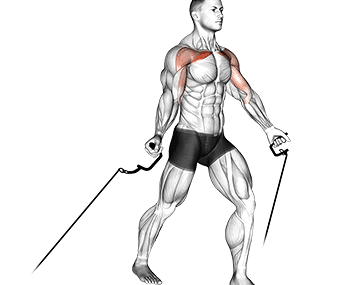
Set cables low, pull up and in—like hugging from below.
- Why it works: Constant tension + upward path = lower chest focus.
- Tip: Stand tall, squeeze at the top. Don’t rush.
✅ Pro Tip:
Pick 2–3 of these per session. Focus on form, not weight. That’s how results come.
Lower Chest Workout Mistakes That Kill Your Gains
Of course, doing the right exercises is only part of it. If your form’s off or you’re rushing through the reps, your lower chest won’t grow—doesn’t matter how much you train.
Before you start your workout, keep these tips in mind. They’ll help you get more out of each rep and stop you from wasting time in the gym.
| ✅ What to Do | ❌ What to Avoid |
|---|---|
| Go slow and controlled | Rushing through the motion |
| Use a decline or downward angle | Only doing flat or incline presses |
| Squeeze your chest at the top | Just moving the weight |
| Use full range of motion | Half reps or cutting depth short |
| Focus on good form, not heavy weight | Ego lifting, losing control |
| Lean forward slightly during dips | Staying too upright (hits triceps) |
| Keep core tight during push-ups | Letting hips or chest sag |
✅ Final reminder:
Take your time. Feel each rep. The lower chest is a stubborn area for a lot of people. If you train it right, with control and intent, you’ll see it grow—and your whole chest will look way better.
Sample Lower Chest Workout Plan
Now let’s take all that info and turn it into a plan. Let’s keep it simple.
Lower chest doesn’t need to be trained every day. Two focused sessions a week are enough if you do them right.
Here’s a simple weekly plan that just works.
| Day | Focus | Workout Details |
|---|---|---|
| Monday | Lower Chest (Main Session) | - Decline Bench Press – 4 sets x 8–10 reps - Dips – 3 sets x max reps - Low Cable Crossover – 3 sets x 12–15 reps |
| Tuesday | Rest or other muscle groups | Light cardio or legs / back |
| Wednesday | Lower Chest (Light Volume) | - Decline Push-Ups – 3 sets x 15–20 reps - Decline Dumbbell Flyes – 3 sets x 12 reps |
| Thursday | Rest | Full rest or light mobility/stretching |
| Friday | Full Chest (Optional) | - Flat Bench or Incline Press + 1 lower chest move (e.g. dips or cables) |
| Saturday | Active Rest or Shoulders | Keep it light, avoid chest overload |
| Sunday | Rest | Recovery day |
✅ Notes:
- Keep at least 48 hours between lower chest days.
- Focus on form over weight—especially with dips and cables.
- Don’t skip rest days. Leave at least one rest day between lower chest workouts.
So to wrap it all up, that’s everything you need.
You know how to exercise lower chest, which exercises actually work, how to do them properly, and where to fit them into your week.
Lower chest training doesn’t have to be complicated. A few good moves, done with control, and a bit of consistency—that’s all it takes. Once it starts to grow, your chest will look way better. More complete. More balanced.
So don’t skip it. Train it right. You’ll see the difference—and feel it too.
Now go hit the gym. Simple work. Real results.

Hi, I’m Alex Carter, part of the editorial team at Leadman Fitness. We specialize in crafting premium custom racks, cable machines, functional trainers, and strength accessories for home and commercial gyms. With a background in competitive powerlifting and gym design consulting, I’ve spent years testing gear under heavy loads and optimizing layouts for efficiency.
I focus on translating real-world user frustrations—like space limitations, budget constraints, or durability needs—into actionable solutions. By collaborating directly with our engineers and facility owners, I ensure our custom equipment evolves to solve the unspoken challenges lifters face daily. What I share isn’t textbook advice; it’s battle-tested insight from racks I’ve welded, cables I’ve replaced, and gym floors I’ve trained on.
